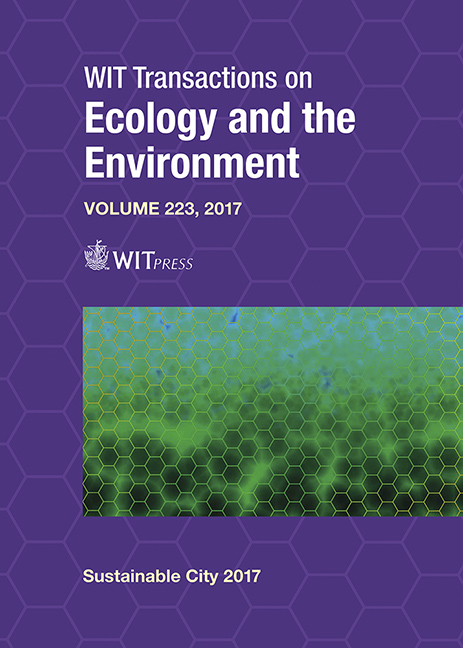SUSTAINABLE ARCHITECTURE: BUILDING DESIGN METHOD INTEGRATING USER’S COMFORT, ADAPTIVE BUILDING, PASSIVE OPTIMIZED BUILDING AND BUILDING INTEGRATED PV – EXPERIENCES FROM A UNIVERSITY COURSE
Price
Free (open access)
Transaction
Volume
223
Pages
13
Page Range
185 - 197
Published
2017
Size
838 kb
Paper DOI
10.2495/SC170161
Copyright
WIT Press
Author(s)
UDO DIETRICH, MIRIAM POSSELT
Abstract
Buildings are constructed to deliver users indoor comfort. There are two further requests to realize in the 21st century: Firstly, buildings should be carbon free, energy demand and supply of renewable energies should be in balance. Secondly, buildings should allow an adaptive use, users should have the possibility to control temperature, ventilation and lighting through comfort-relevant parts of the building. During a master course for students of architecture was investigated how to achieve these objectives and which design method is appropriate. Thus, a design method strictly following comfort criteria was applied. The assignment was to design an office building (moderate climate, Germany). The design method taught and experienced related main comfort criteria with the progressing building design. Shape of the building and shading by different parts of it determine the access of daylight to the later areas of usage. Size and placement of operable windows or separate openings determine natural ventilation, placement of desks determines if it is draught-free or not as well as the view out of the window. Window size and shading system determine overheating protection and the need of cooling systems. The remaining energy demand should be covered as much as possible by renewable energies gained on-site mainly by PV modules on the building’s roof and façades. Then only in the last step the aesthetics of the building was regarded. The paper will report about all the different design steps with examples from student’s works. A special chapter will deal with the experience of the students with that design process and if they assess it as a helpful method on their way of becoming architects.
Keywords
adaptive building, aesthetic, building design method, building integrated PV, comfort, education





